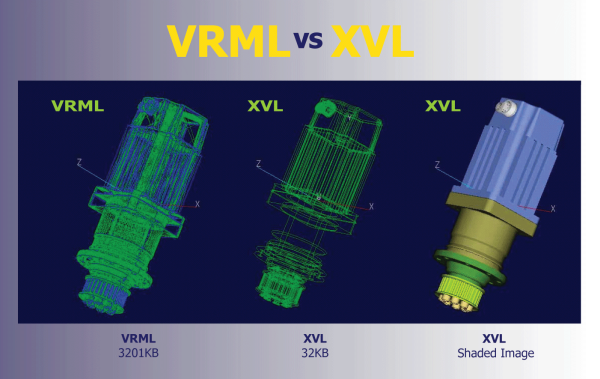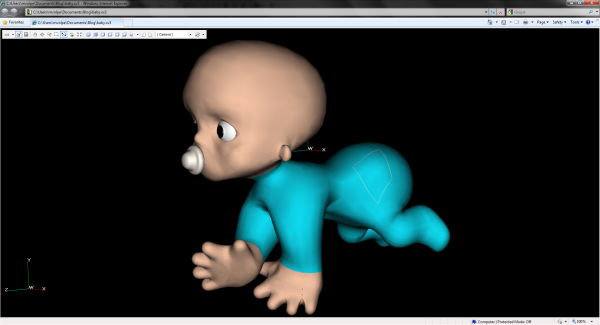The Birth of XVL - Lightweight Data
In 1984 Hiroshi Toriya, co-founder and CEO of Lattice Technology, Inc., was working at RICOH Software Research Center in Tokyo. He had already studied 3D technology when he met Dr. Chiyokura, co-founder of Lattice Technology, and together they developed a solid modeling system called DESIGNBASE. This system could handle a 3D telephone model in an expensive workstation with 2 Megabytes of memory!
Later on, DESIGNBASE was enhanced for the CAD/CAM industry, and data representation had become more precise, which required larger memory. At that point in time they had not yet considered the idea of utilizing it for lightweight 3D.
With the rise of the Internet, in the early 1990’s, all sorts of data - text, images & movies got shared online and handled by web browsers. It was just a matter of time for 3D to start traveling down that road.
In 1995 VRML - Virtual Reality Modeling Language was the standard file format for representing 3-dimensional (3D) interactive vector graphics, and it was especially designed with the World Wide Web in mind.
However, VRML was too heavy to handle 3D geometries, and only very simple 3D models could be tackled through narrow band net environment.
That is when they came up with the idea that surface representations like those from the original DESIGNBASE could be used in the 3D format. Technically, it was clear that the data size would need to become more than 10 times smaller than the original CAD model - Toriya estimated that it should be 100 times smaller.

Original XVL - 1999
As soon as they found the possible solution to lightweight 3D, they founded Lattice Technology. It was in 1997. The developers then implemented the concept, and they worked on it for two years before they could define the basic geometry assembly structure format. In 1999 they finally developed what became known as the XVL format. It was the leading-edge technology in those days, and they were very proud of their achievements.
At that time, they had no way to generate XVL files, so they had to develop a modeling tool - XVL Designer – to create models in the XVL format. After that, they came up with software to convert from CAD to XVL - XVL Converter for IGES.
In the early days the challenge for Lattice Technology was how the new format would actually be used in industry. It was for this reason that they started to work with TOYOTA.
Since then, Lattice Technology has continually enhanced the XVL format enabling the use of 3D data in design and manufacturing applications such as design review, digital assembly, technical documentation, electronic parts catalogs and more.
Model Generated Using XVL Designer in 1999 - click to play (requires the free XVL player)
Download our free player and play with one of the first XVL models. Click the button to download the free XVL player. Once the installation is completed click on the image above and enjoy it!
Visit this page for the XVL Player.
